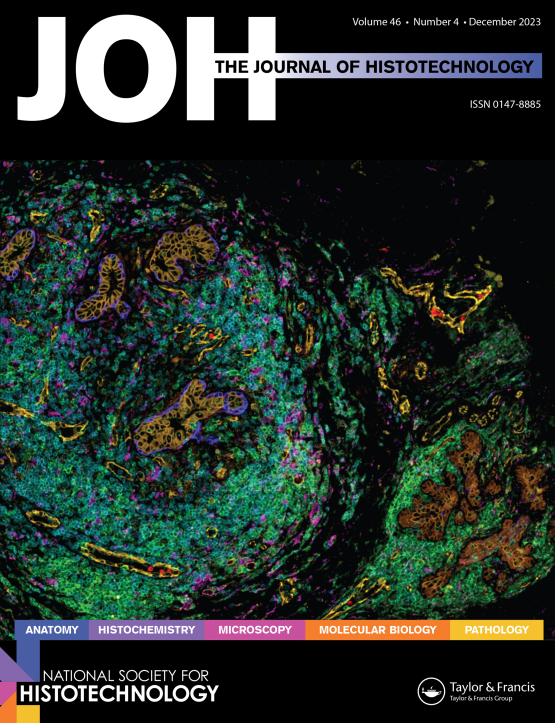Submit a Manuscript to the Journal
Journal of Histotechnology
For a Special Issue on
The Histology for Spatial Biology Special Collection Series (2025)
Manuscript deadline

Special Issue Editor(s)
Elsa Molina,
Salk Institute, USA
emolina@salk.edu
Carolina Oses Sepulveda,
SciLifeLab, Sweden
carolina.oses@scilifelab.se
Santhosh Sivajothi,
Jackson Laboratory, USA
santhosh.sivajothi@jax.org
Shuoshuo Wang,
Harvard Medical School, USA
wangshuo@broadinstitute.org
The Histology for Spatial Biology Special Collection Series (2025)
This special collection aims to bridge the evolving synergies between histology and spatial biology. By providing a platform for best practices, innovations, and cross-disciplinary dialogue, we seek to chart the future of histotechnology that leads, transforms, and elevates scientific discovery. Spatial biology represents a potential catalyst for the transformation of histotechnology, enhancing both its intellectual impact and technical relevance in modern science. We welcome contributions that advance not only the technical and methodological aspects of spatial omics but also amplify the voices of practitioners in the field. By addressing current blind spots and leveraging practical expertise, this initiative aims to foster a robust and collaborative future for histology and spatial biology alike.
In this ongoing special edition series, JOH would like to collect commentaries, perspectives, reviews, guidelines, research articles, technical notes, protocols, and case studies, on topics including but not limited to:
1. Innovations in Sample Preparation
Advanced techniques for preserving tissue integrity and cellular context in spatial assays.
Utilization of tissue microarrays (TMAs) within spatial omics platforms for streamlined workflows.
2. Standardized Protocols
Practical guides for specimen handling, tissue processing, staining, and imaging to ensure consistency.
Strategies for accessing and utilizing biobanks to support large-cohort or multi-site studies.
3. Technological Accessibility and Scalability
Approaches to simplify and scale spatial omics technologies for broader accessibility.
Balancing cost-efficiency with data quality to expand spatial omics applications without compromising performance.
4. Single-Chance Handling Techniques
Methods for managing unique and rare clinical or environmental samples where re-testing is not feasible.
Strategies to maximize outcomes from irreplaceable specimens.
5. Tissue-Specific Methodologies
Protocols tailored to challenging tissue types, such as adipose, neural, bone, cartilage, ocular tissues, pancreas and skin.
Expanding the applicability of spatial omics techniques to a wider range of tissues including non-standard organisms, plants and fungi.
6. Validation and Reproducibility
Methods to ensure reproducibility across various spatial omics platforms and experimental conditions.
Insights into antibody validation for multiplexed panels to enhance consistency and accuracy.
7. Multiomics and Integrated Workflow
Tissue-handling methodologies that enable multiple assays (e.g., transcriptomics, proteomics, and epigenomics) from a single sample or even a single section, maximizing the utility of limited tissue specimens.
Innovative approaches for integrating histological techniques with spatial or multiomic technologies.
Practical strategies for optimizing tissue preservation, fixation, and sectioning to ensure consistency and reproducibility across omics platforms.
Submission Instructions
The deadline for submitting articles is December 31st, 2025. We encourage prospective authors to send pre-submission inquiries to: wangshuo@broadinstitute.org or joheditor@nsh.org. While the special issue will be compiled in late 2025, we aim to publish your time-sensitive content as soon as it is accepted with streamlined peer-review process. The issue will be widely promoted online through social networks and NSH events, ensuring maximum exposure for your work.
